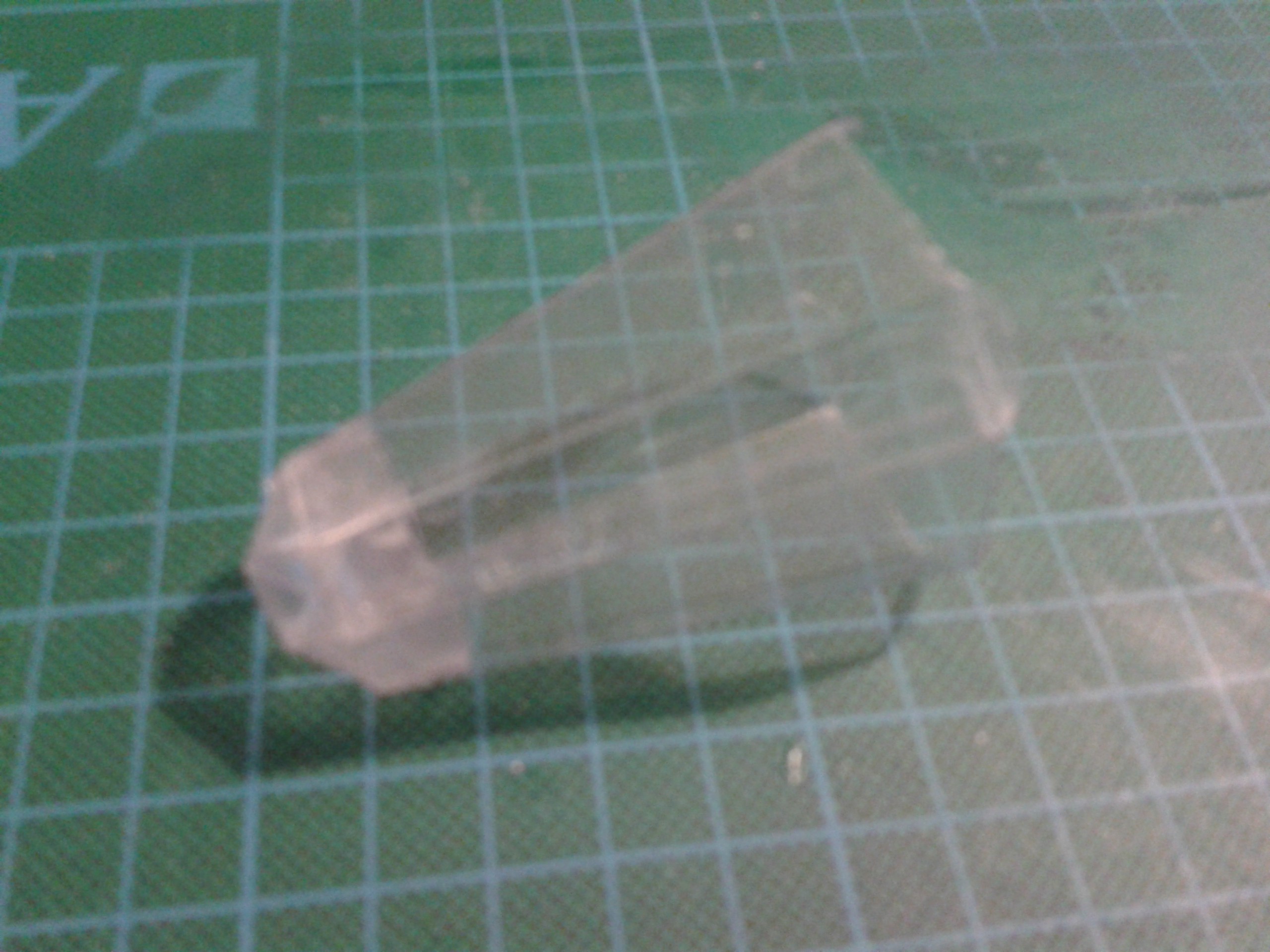I've been experimenting with other materials as well as cardboard to build these exoskeletons from. The first thing I wanted to try was plastic sheeting. There's all sorts available, but I wound up buying some Polyethylene sheet, about the same thickness as 200GSM card.
This, I discovered, after building a limb, proved to be way over the top. Ever tried to get into one of those blister packs without a pair of scissors? Well they are made of PET, same as plastic soda bottles and they are thinner plastic too. I'll try a sheet from a soda bottle and see if the curve is a problem, but I suspect the creases will resolve this.
Cardware Crystal, or perhaps Cardware Forever.

This turned out to be pretty much indestructible. I couldnt destroy that with my hands, it resists being sat on, hot water, acetone, thinners, and probably nuclear assault. I dont have any plutonium handy to test this with ;-) It can be glued with superglue or a contact adhesive like Bostik. I was recommended Methyl Ethyl Ketone but it doesnt work as well and is hard to obtain if you dont have access to a hobbyist retailer.
It also has Stealth capability as you can see from the shoddy photo. It's transparent to the IR of an autofocus, which trains on the background instead. Classic saucer technology if I'm not mistaken!
Other materials
As another nod to recycling, after a heavy night filtering out the chemicals contained within, I also tried sheet metal. Now I know I said no metal feet to crush our skulls but I think aluminium not much thicker than foil is not very threatening.
Cardware: Heavy Metal
 This is unbelievably strong and surprisingly easy to fold with a hangover. Modern beer cans are now so thin they dont even have much in the way of sharp edges, my only concern. But there was no blood! Like the Crystal limb, it was constructed by printing an Origaime template onto paper and gumming it to the sheet. Then it was scored (the plastic with a rounded but sharp point, and the metal with a ballpoint pen.) Then the templates are removed and the folding begins. I've used Sellotape here as Superglue just made a horrible mess.
This is unbelievably strong and surprisingly easy to fold with a hangover. Modern beer cans are now so thin they dont even have much in the way of sharp edges, my only concern. But there was no blood! Like the Crystal limb, it was constructed by printing an Origaime template onto paper and gumming it to the sheet. Then it was scored (the plastic with a rounded but sharp point, and the metal with a ballpoint pen.) Then the templates are removed and the folding begins. I've used Sellotape here as Superglue just made a horrible mess.
Heavy Metal can also be made in red and white livery, each of the parts fits onto a rectangle cut from a 330ml can.
 Morning.Star
Morning.Star
Discussions
Become a Hackaday.io Member
Create an account to leave a comment. Already have an account? Log In.
According to
https://www.doitpoms.ac.uk/tlplib/artefact/flash/infrared.swf
PET is non-polarising in the common ranges used by IR but has some holes in the band and is affected by sample thickness...
It's possible this isnt PET. It comes in single sheets though, crystal transparent. It kinks but doesnt break, stretches and looks grainy under magnification on the cut edges. If it isnt I'd be surprised.
One of the reasons for testing a known source against it, I'll post the results ;-)
Are you sure? yes | no
It walks like a duck, it quacks like a duck, but is it a duck lol. Actually the first version of uBob reminds me of Silent Running.
Are you sure? yes | no
I really love those PET sheets. I used them for the first body of #µBob biped robot, and they are very easy to work with, and also look great. To the point where I had problems removing the body when I wanted to rebuild the robot -- it turned out that it's easier to just cut the sheet with a sharp knife, than to try to break the glue. And it's also easier to route cables in it etc., since you can see what you are doing.
I didn't know it's transparent to IR -- in fact, I had problems with it blocking my IR distance sensor. But maybe it wasn't PET after all?
Are you sure? yes | no